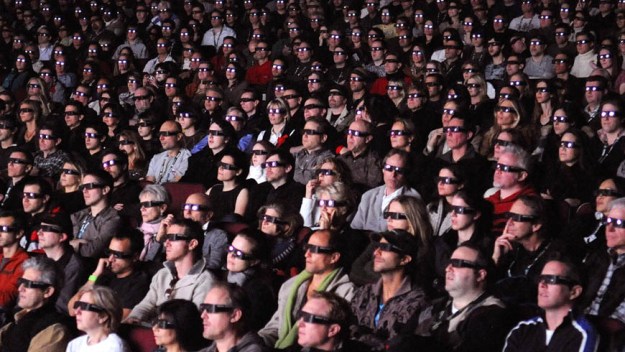 Beginning next summer, the movie going experience will be a bit different for audiences–and possibly more expensive. The big push over the last year has been 3D. It is almost as if there is court order requiring all action films to be released in 3D. At the very least there seems to be a sort of private agreement between studios to push the format. Ever since Avatar, studios have seen the lucrative benefits of 3D movies. Theater owners, however, have not been quite as happy to embrace the technology, as it requires major upgrades to convert older theaters into 3D-capable screens. And for many exhibitors, the cost of 3D movies is about to get a bit higher.
Beginning next summer, the movie going experience will be a bit different for audiences–and possibly more expensive. The big push over the last year has been 3D. It is almost as if there is court order requiring all action films to be released in 3D. At the very least there seems to be a sort of private agreement between studios to push the format. Ever since Avatar, studios have seen the lucrative benefits of 3D movies. Theater owners, however, have not been quite as happy to embrace the technology, as it requires major upgrades to convert older theaters into 3D-capable screens. And for many exhibitors, the cost of 3D movies is about to get a bit higher.
Sony Pictures Entertainment has begun to notify theater owners that beginning next year, it will no longer pay for the RealD glasses needed to watch a 3D film. For smaller films, the cost of disposable 3D glasses can reach upwards of $2 million, which makes up about 50 cents of each ticket cost. A major 3D release, however, can cost a studio between $5 million to $10 million per movie in 3D glasses alone, a cost that will now need to be absorbed by the theater owners beginning on May 1, 2012.
“This is an issue that has to be resolved between us and our exhibition partners. We are trying to give them a very lengthy lead time in regards to the change in policy,” Sony worldwide president of distribution Rory Bruer told The Hollywood Reporter.
The timing also means that two of Sony’s biggest upcoming movies, The Amazing Spider-Man and Men in Black III, both of which will be presented in 3D, will not have the 3D glasses subsidized by Sony.
Sony and many other studios are pushing for an ownership model for 3D glasses, where filmgoers will need to either bring their own glasses, or buy a new pair at the theater. The studios have argued that this could be a new revenue stream for theater owners. Whether or not American audiences will be willing to pay extra for glasses on top of paying the additional fee for the 3D movies, which currently runs $3-$4 to begin with, might be an issue.
Currently RealD glasses are recycled after each use, but the costs to provide them per movie remain high. Studio heads have claimed that they never intended for the disposable glasses trend to be a permanent one, and that personal ownership of 3D glasses is the next inevitable step. But, of course, at the heart of this change is simply money. This summer’s box office was the worst in 14 years, and studios are looking for ways to cut back. The real question is how will theater owners respond to the potential new costs.


